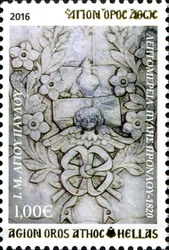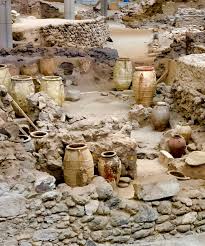Stamp: Agion Oros Athos Stone Reliefs - C (Greece, Mount Athos 2016)
Agion Oros Athos Stone Reliefs - C (Greece, Mount Athos 2016)
06 October (Greece, Mount Athos ) within release Agion Oros Athos Stone Reliefs goes into circulation Stamp Agion Oros Athos Stone Reliefs - C face value 1.00 Euro
| Stamp Agion Oros Athos Stone Reliefs - C in catalogues | |
|---|---|
| WADP Numbering System - WNS: | WAD:XK015.16 |
Stamp is vertical format.
Number in set - 5||(show set). Layout - sheet of 16. Issuing - Hellenic Post. Printer - Veridos Matsoukis SAAlso in the issue Agion Oros Athos Stone Reliefs :
- Stamp - Agion Oros Athos Stone Reliefs - C face value 0.30;
- Stamp - Agion Oros Athos Stone Reliefs - C face value 0.50;
- Stamp - Agion Oros Athos Stone Reliefs - C face value 0.72;
- Stamp - Agion Oros Athos Stone Reliefs - C face value 1.00;
- Stamp - Agion Oros Athos Stone Reliefs - C face value 1.62;
|
Data entry completed
83%
|
|
|---|---|
| Stamp Agion Oros Athos Stone Reliefs - C in digits | |
| Country: | Greece, Mount Athos |
| Date: | 2016-10-06 |
| Size: | 30 x 40 |
| Perforation: | 13 by 13 |
| Format: | Stamp |
| Face Value: | 1.00 Euro |
Stamp Agion Oros Athos Stone Reliefs - C it reflects the thematic directions:
Sculpture is the branch of the visual arts that operates in three dimensions. Sculpture is the three-dimensional art work which is physically presented in the dimensions of height, width and depth. It is one of the plastic arts. Durable sculptural processes originally used carving (the removal of material) and modelling (the addition of material, as clay), in stone, metal, ceramics, wood and other materials but, since Modernism, there has been almost complete freedom of materials and process. A wide variety of materials may be worked by removal such as carving, assembled by welding or modelling, or moulded or cast.
Archaeology or archeology is the study of human activity through the recovery and analysis of material culture. The archaeological record consists of artifacts, architecture, biofacts or ecofacts, sites, and cultural landscapes. Archaeology can be considered both a social science and a branch of the humanities. It is usually considered an independent academic discipline, but may also be classified as part of anthropology (in North America – the four-field approach), history or geography. The discipline involves surveying, excavation, and eventually analysis of data collected, to learn more about the past. In broad scope, archaeology relies on cross-disciplinary research.
History (derived from Ancient Greek ἱστορία (historía) 'inquiry; knowledge acquired by investigation') is the systematic study and documentation of the human past
In European academic traditions, fine art is made primarily for aesthetics or creative expression, distinguishing it from decorative art or applied art, which also has to serve some practical function, such as pottery or most metalwork. In the aesthetic theories developed in the Italian Renaissance, the highest art was that which allowed the full expression and display of the artist's imagination, unrestricted by any of the practical considerations involved in, say, making and decorating a teapot. It was also considered important that making the artwork did not involve dividing the work between different individuals with specialized skills, as might be necessary with a piece of furniture, for example. Even within the fine arts, there was a hierarchy of genres based on the amount of creative imagination required, with history painting placed higher than still life.



